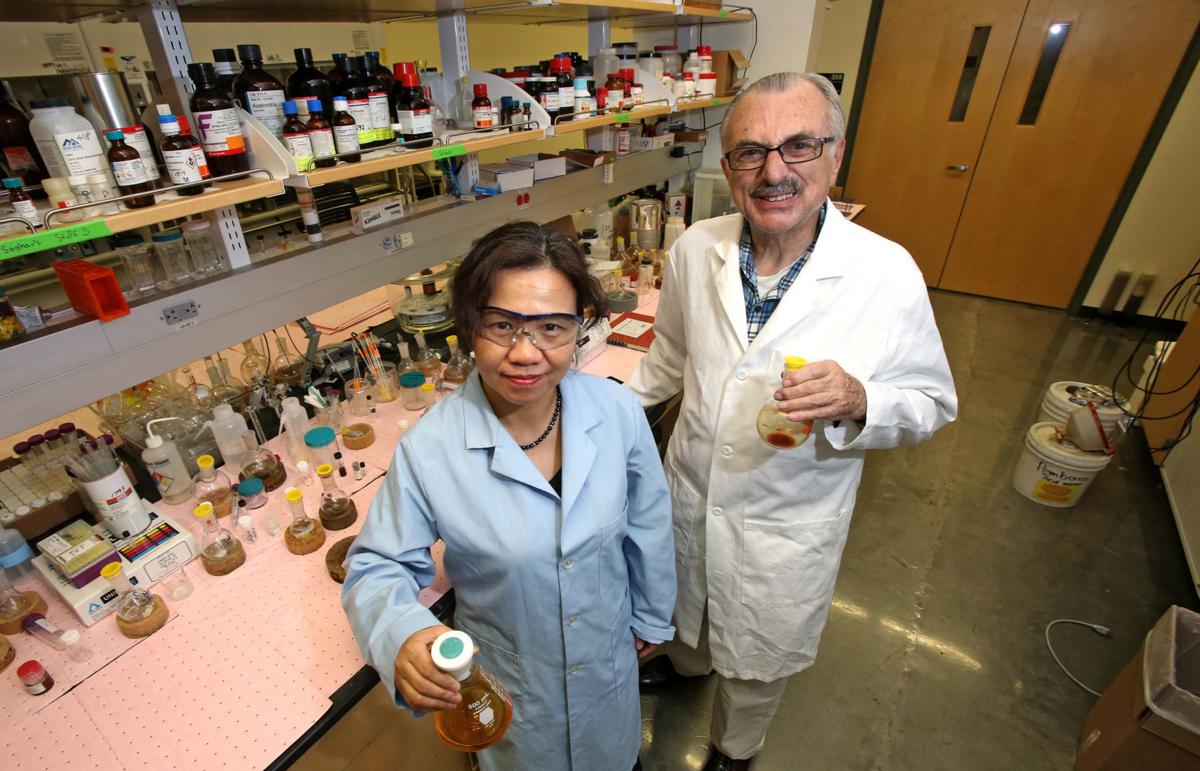The University of Arizona is moving to commercialize two faculty-invented drug compounds that could help protect people from sun damage and skin cancer by boosting the skin’s natural pigment.
The chemical compounds, developed by professors Minying Cai and Victor Hruby in the UA department of chemistry and biochemistry, were recently licensed to startup MCR Therapeutics, formed by Cai and Hruby last year.
Hruby is a regents professor emeritus who has been involved in several drug startups, and Cai is a longtime drug researcher who joined the UA in 1999 as a research scientist and has been a research professor since 2007.
Each hold appointments in the College of Science and the College of Medicine and are members of the Arizona Cancer Center and the UA Bio5 Institute.
The peptides developed by Cai and Hruby target certain melanocortin receptors, which stimulate the natural production of skin cells that produce melanin — the pigment responsible for skin color that provides protection against harmful ultraviolet light.
With 3 million new cases diagnosed each year, skin cancer is one of the most common and deadly cancers. More than 9,300 people are expected to die from the disease in 2018 in the U.S. alone.
The new drugs could help protect people from skin cancer as a more effective alternative to traditional sunscreens.
Sunscreen lotions can prevent skin damage from ultraviolet radiation, but they are often applied incorrectly, can easily wash away and are only partially effective compared to natural tanning or pigmentation, Hruby said.
Drugs based on the new peptides could be administered via a nasal spray, intraperitoneal injection into the body cavity or perhaps a skin patch, Hurby said.
Though the peptides have shown promise in preclinical studies, they would still need to go through a series of human clinical trials to win regulatory approval.
Hruby said he and Cai are talking with two companies about partnering or collaborating with them to push the research forward.
“We think were within one or two years of clinical trials, all we have to do is get a partner to do the necessary things with the FDA,” he said.
Melanocortin receptors are known to play a role in other physiological aspects such as obesity, stress, cognition and mood, but MCR plans to initially focus on skin.
Cai and Hruby have worked together for years on drugs that target melanocortin receptors. In 2016, the pair licensed a startup company to develop a drug that showed promise in treating acute depression and related ailments by blocking the receptors.
And this isn’t the first time Hruby has shepherded a melanin-boosting drug to market.
In the 1980s, Hruby and another UA professor, the late Mac Hadley, invented a skin-darkening compound, afamelanotide, later known as Melanotan I, that was licensed to an Australian company.
The company, now known as Clinuvel, won European approval of the drug labeled as Scenesse to treat patients with erythropoietic protoporphyria, a rare disease that causes severe inflammation of the skin with exposure to sunlight.
A related drug known as Melanotan II is widely and illegally sold on the internet as an injectable tanning agent sometimes called the “Barbie drug.” It is banned in the U.S., Canada and Europe because it has not undergone proper testing and is known to cause serious side effects.
Hruby said the new peptides he and Cai have developed differ from the earlier compounds because they are selective in their action and hence don’t cause problematic side effects.
The research team worked with Tech Launch Arizona, the office of the UA that commercializes inventions stemming from UA research, to patent the technologies and advanced their business plan through the National Science Foundation I-Corps program.
They also received TLA asset-development funding to help ready their product for market.





